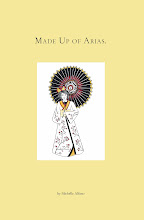 Factory Girl (2007) directed by George Hickenlooper
Factory Girl (2007) directed by George HickenlooperSedgwick was a Harvard educated blue blood whose descendants date back to 1635 and include a signatory to the Declaration of Independence. She has a trust fund and a taste for the Bohemian and modern art. This, and art school, eventually leads her to New York with best friend Chuck Wein (Jimmy Fallon) and into the lair of Andy Warhol, creepily and effectively played by Australian actor Guy Pearce, and the Factory, a former downtown hat factory which becomes the apex for the avant-garde scene in New York where film, visual art, poetry, drug use and general debauchery collide. The scenario is convincingly wrought, beautiful and enticing (utterly unlike the real Factory apparently). It is appealing despite the fact that we know it will lead to Edie's destruction.
Warhol is fascinated by the Musician as he seems to be by all stars. The Musician, in turn, seems repulsed by the world that Edie inhabits and eventually abandons her to marry someone else (fashion model and Playboy bunny Sara Lownds in real life). In the film, Edie's decline is clearly linked to his rejection of her.
Her addiction, lack of confidence, depression, implications of sexual abuse by her father, all debilitate her, scar her physically and emotionally so that she is no longer the media and fashion darling that she once was. Warhol wonders despairingly "Why does she want to be ugly?" He, too, abandons her as do Vogue fashion mavens such as Diana Vreeland. She has become all that repels him: unkempt, slovenly, out of control. Warhol adherents advocate that she abandoned Warhol, thinking Dylan's stardom would bring her greater fame.
After she ODs, is robbed, nearly dies in a fire, and is repeatedly humiliated, Edie finally leaves New York for California, broken, broke, almost destroyed. She lives on, checking into a number of psychiatric institutions, eventually marries Michael Post, a fellow psychiatric patient, but overdoses fairly soon after in 1971 by accident, or design. is unclear.
As Michiko Kakutani said in her review of the 1982 Stein book, Edie's story "is not simply the story of one girl's tragic loss of innocence or one family's decline and disarray. It is also the story of what happened to this country during the 1960's and the consequences of those years when the past was disavowed and replaced by a hectic new gospel of sensuality and outrage".
What is that saying ... some people live only to serve as examples of how not to live?









No comments:
Post a Comment